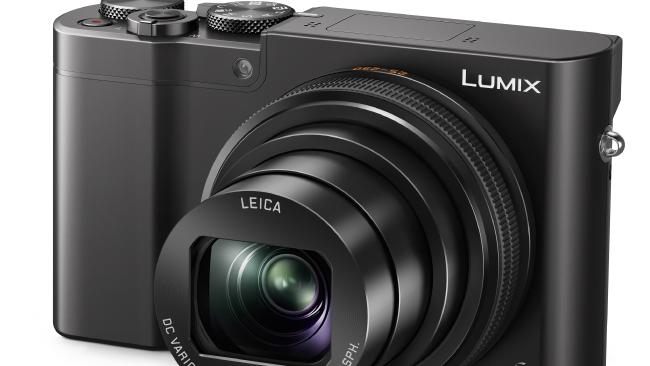
PANASONIC is pitching what it’s called the ultimate travel camera. The confusing thing is it is also pitching a second camera in the same way.
When it comes to travel cameras, putting aside seriously dedicated photographers with a bag full of lenses, a travel camera must first pass a key test: whether it fits in your pocket/
The trouble with that test is that your pocket is filled with a camera you already use daily.
So the ultimate travel camera has to overcome the next challenge: does it have a feature, or features, that will convince you to carry a camera apart from your smartphone?
A camera maker will list a string of reasons why a dedicated camera is better than a smartphone camera, but two of the main ones are this: sensor size and a zoom lens.
Your smartphone almost certainly does not have a zoom lens, and it will have a sensor that is smaller than the sensor in a dedicated camera.

Long lens … the Panasonic Lumix DMC-TZ80 has a 30x Leica zoom lens (24-720mm) and has 4K burst mode so you never miss an action shot.Source:Supplied
So what is the ultimate travel camera? It is, according to Panasonic, the Lumix DMC-TZ110. It is also, again according to Panasonic, the Lumix DMC-TZ80.
How do you choose between the two? Chances are it will be on the price tag, with the TZ110 being $400 more.

Let there be light … Taken with Panasonic DMC-TZ110 compact travel camera, a meerkat on dawn patrol at Dubbo zoo. Picture: Rod ChesterSource:Supplied
But there is more than that. The TZ80 has a massive 30x zoom, which gives you a 24-720mm range. The TZ110 has a larger 1 inch (2.54cm) sensor with larger pixels, which increases your chances of getting better images, although it only has a 10x zoom of 24-250mm.
We tested the cameras out with two days of shooting at the Taronga Western Plains Zoo in Dubbo. And by the end, I was like Panasonic: One is great, the other one is also great.
Both cameras have the 4K Burst mode, the first pocket-size cameras to have the feature that first appeared in the Panasonic DMC-G7 launched last year.
This shoots 4K video that captures 30 frames per second for one second before and after you hit the shutter.
Trying to take a picture of a cheetah, I kept missing the moment it would open its mouth to meow. So I switched to 4K Burst, waited for a meow and then hit the shutter to capture something that had already happened.

Easy action … using the 4K Burst mode and the Panasonic DMC-TZ80 makes it easy to capture the moment a cheetah meows. Picture: Rod ChesterSource:Supplied
Both cameras also have a post focus mode, which again is actually a trick that shoots a burst of 4K video with a different focal point in each frame. You take a shot and then select which part you want in focus, or select a range of shots with different focal points.
I started the day with golden light using the TZ110, because I wanted to make the most of the light with that great big sensor. Then, I switched to the TZ80 because I needed that extra zoom to frame on the details of the animals that decided to keep their distance.

In the details: the 720 zoom on the Panasonic DMC-TZ80 lets you get the detail you cannot capture on your smartphone. Picture: Rod ChesterSource:Supplied
In both cases, I transferred images to my iPhone to share using the Panasonic app. The process works although still seems like there should be fewer steps to make the connection.
So, which one should you buy? The long zoom on the TZ80 is great, and gave me shots I couldn’t do with the TZ110. But then you look at the clarity of the images with the bigger sensor, and it is the better camera.
You need to make a decision based on the facts. And here is one more factor: my favourite image from two days of shooting at the zoo was a quick snap on my iPhone.
Panasonic DMC-TZ110 / 4.5/5 / $999 / panasonic.com/au/
Panasonic DMC-TZ80 / 4/5 / $599 / panasonic.com/au/
[SOURCE :-news]

